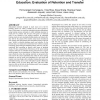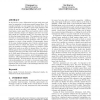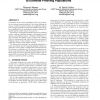ECRIME
2007
14 years 7 months ago
2007
Tools that aim to combat phishing attacks must take into account how and why people fall for them in order to be effective. This study reports a pilot survey of 232 computer users...
ECRIME
2007
14 years 7 months ago
2007
Educational materials designed to teach users not to fall for phishing attacks are widely available but are often ignored by users. In this paper, we extend an embedded training m...
ECRIME
2007
14 years 7 months ago
2007
There are many applications available for phishing detection. However, unlike predicting spam, there are only few studies that compare machine learning techniques in predicting ph...
ECRIME
2007
14 years 7 months ago
2007
In the last few years, obfuscation has been used more and more by spammers to make spam emails bypass filters. The standard method is to use images that look like text, since typi...
ECRIME
2007
14 years 7 months ago
2007
Banks and other organisations deal with fraudulent phishing websites by pressing hosting service providers to remove the sites from the Internet. Until they are removed, the fraud...
ECRIME
2007
14 years 7 months ago
2007
We estimate of the extent of phishing activity on the Internet via capture-recapture analysis of two major phishing site reports. Capture-recapture analysis is a population estima...
ECRIME
2007
14 years 7 months ago
2007
We propose a scheme that exploits scale to prevent phishing. We show that while stopping phishers from obtaining passwords is very hard, detecting the fact that a password has bee...



